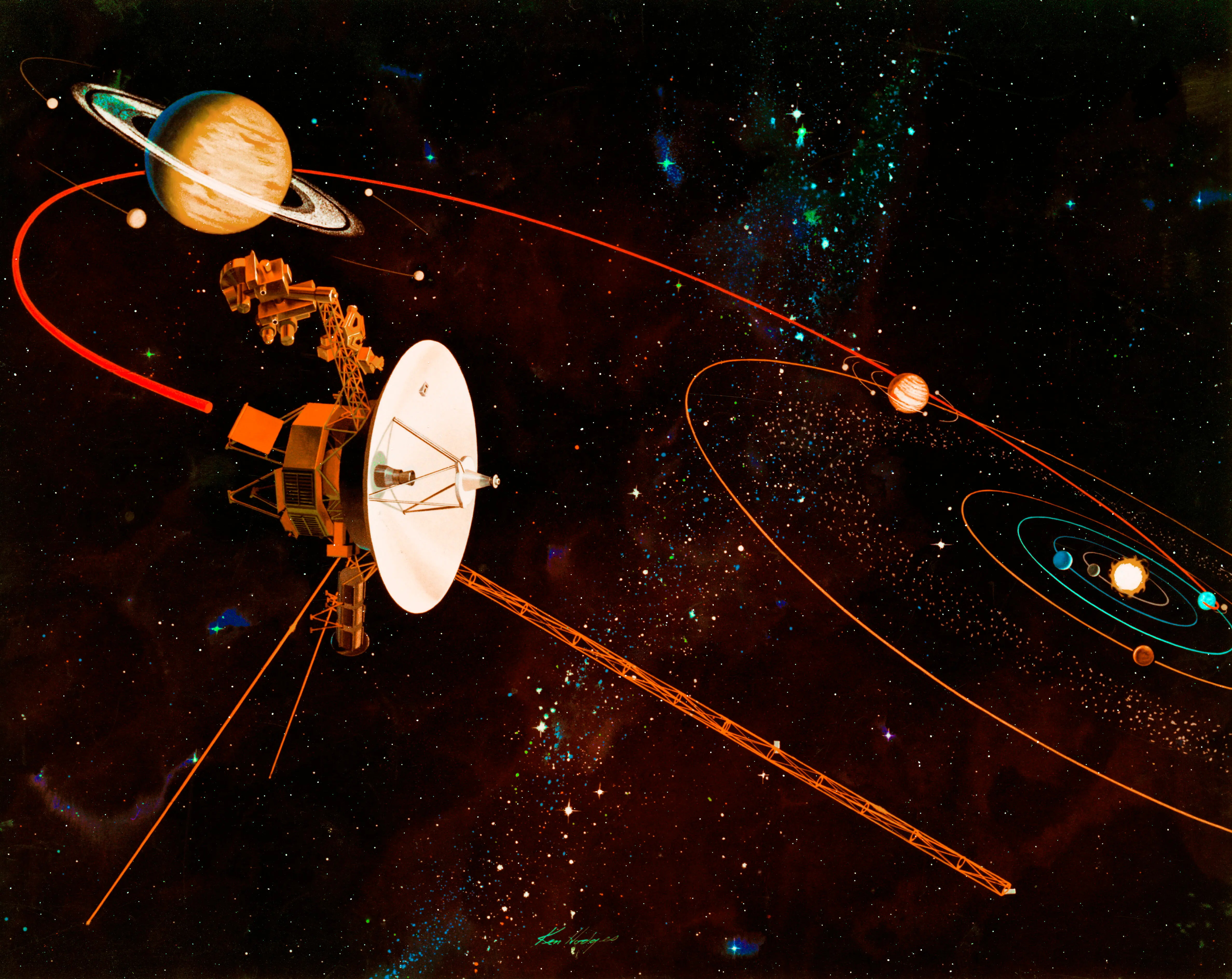NASA’s Juno probe may have gone silent after unlocking new mysteries about Jupiter’s atmosphere and storms
-
 An artist's impression (circa 1977) of the trajectory to be taken by NASA's Voyager 1 and Voyager 2 space probes on their missions to study Jupiter and Saturn. (Photo by Space Frontiers/Archive Photos/Getty Images)
An artist's impression (circa 1977) of the trajectory to be taken by NASA's Voyager 1 and Voyager 2 space probes on their missions to study Jupiter and Saturn. (Photo by Space Frontiers/Archive Photos/Getty Images)NASA’s Juno spacecraft, which has spent years studying Jupiter and uncovering some of the most detailed insights about the planet’s atmosphere and storms, may have stopped communicating with Earth. The possible loss of signal marks a potential end to one of NASA’s most successful deep-space missions.
The U.S. space agency confirmed that it has not received new data from the Juno probe in recent days, raising concerns that the spacecraft could have entered an inactive or damaged state. Teams at NASA’s Jet Propulsion Laboratory (JPL)are reportedly analyzing the situation to determine what might have caused the communication breakdown.
Juno’s journey around Jupiter
Since its August 2011 launch, Juno cruised almost five years across the vastness of space to arrive in July 2016 at Jupiter's orbit. Ever since, the probe has undertaken dozens of orbits around the gas giant, observing all aspects of the planet's powerful magnetic field and thick clouds to the immense storms swirling on its surface — including the planet's legendary Great Red Spot.
Juno's mission was intended to bring scientists closer to the largest planet in the solar system and to learn how Jupiter evolved and how it contributed to the development of the rest of the solar system. By looking beneath its dense cloud layers with special equipment, Juno delivered useful information regarding the make-up, gravity, and weather patterns of the planet.
Major scientific discoveries
On its lengthy mission, Juno discovered several key things. Researchers learned that Jupiter's magnetic field is much more intricate than they realized, with areas of high magnetic energy that move around the planet.
The spacecraft also provided close-up views of Jupiter's poles, showing Earth-sized cyclones packed together at both the north and south poles. Perhaps most significantly, Juno assisted in verifying the Great Red Spot, a giant storm observable from Earth-based telescopes. This reaches deep into the atmosphere of Jupiter — much deeper than previous models had indicated.
The results have changed scientists' understanding of weather in the gas giants and how planets form.
NASA’s efforts to restore contact
To date, NASA has not formally announced Juno "dead." The engineers still try to contact the spacecraft, which may have suffered a brief malfunction or entered safe mode — a built-in mode that safeguards instruments in case of technical problems.
But if Juno really has permanently ceased operation, the mission is still being counted as a huge success. It lasted way beyond its initial mission lifetime and continued to function well past its projected lifespan, returning caches of information that will be analyzed by scientists for years.
Juno's mission has opened the door to further exploration of the outer planets. NASA's next Europa Clipper mission, launching in the late 2020s, will expand on some of Juno's findings by examining Jupiter's moon Europa, thought to have a subsurface ocean that could harbor life.
Whether or not Juno's signal is restored, its scientific significance is profound. The information it sent has added depth to human knowledge of Jupiter — a planet that still keeps secrets of the solar system's beginnings.
NASA will issue an update once engineers learn more about the status of Juno. For now, the silence of the spacecraft remains a testament to the trials and triumphs of deep-space exploration.
TOPICS: NASA
- 3I/ATLAS shows methanol production increasing with proximity to Sun
- NASA’s MAVEN spacecraft detects signs of hydrogen coming from comet 3I/Atlas as scientists study the interstellar visitor closely
- NASA explains why the new HiRISE image of interstellar comet 3I/Atlas looks fuzzy while amateur astronomers capture clearer views
- Avi Loeb questions NASA’s 3I/Atlas press conference as he says “obvious facts” may be hiding bigger truth